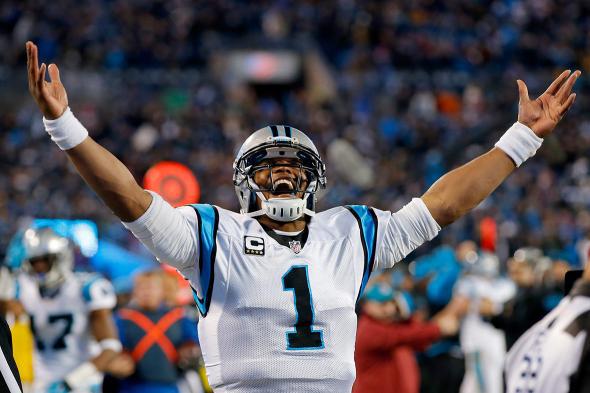The Carolina Panthers are favored to win the Super Bowl. The Panthers’ best player—the one most likely to be captured in televised close-up as the game clock ticks toward zero—is Cam Newton, a man who is rarely photographed without a smile on his face. Ergo, there is a decent chance that one of the iconic images of I Don’t Care What the NFL Says We’re Calling It Super Bowl L Not Super Bowl 50 will be of a football player smiling. That would be a surprising shift in a sports world whose stars—unlike the heroes of games past—are more likely, as Dave McKenna wrote in 2013, to affect scowling intensity than un–self-conscious joy. This is the most vital question of Super Bowl L: Can Cam Newton make smiling cool again?
I’ve seen athletes smile quite recently, you might object. The world of sport is not one that lacks entirely for expressions of mirth and pleasantry.
Sure. But I’m talking about a specific kind of smile. Let’s begin with a taxonomy of what the Newton-esque celebratory sports smile is not:
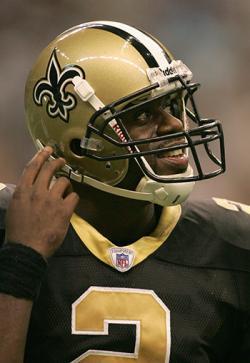
Ronald Martinez/Getty Images
The disbelieving failure smile. The failure smile crosses an athlete’s lips when he throws an interception or misses a last-second shot. This smile is a more emotionally accepting version of the surrender cobra—a signal that you gave it your best, but you can’t win ’em all. It’s been known to irk the home fans: As a Knicks supporter, I admit that it can be a minor annoyance when Carmelo Anthony—as is his occasional habit—grins in head-shaking amusement after some Knicks-ian abomination.
The New Orleans Times-Picayune did a story on Aaron Brooks in 2014 that was mostly about the still-lingering controversy over the former Saints quarterback’s apparently reflexive post-turnover smiling. “That was always my mindset, to keep it on a positive level, to really be uplifting and to enjoy the game,” Brooks told the Times-Picayune. What a loser.
The loose-cannon smile. You’ll see this one when an NBA provocateur like Metta World Peace, Matt Barnes, or Lance Stephenson gets into a fight. Referees rush in to break it up. The offending hothead takes a step back, pauses for a moment, and then breaks into an exaggeratedly wide smile that’s both a statement of Joker-like nihilism and an effort to convince the refs that it’s all cool and friendly here, and there’s no reason to give anyone a technical foul. The effort is almost always unsuccessful.
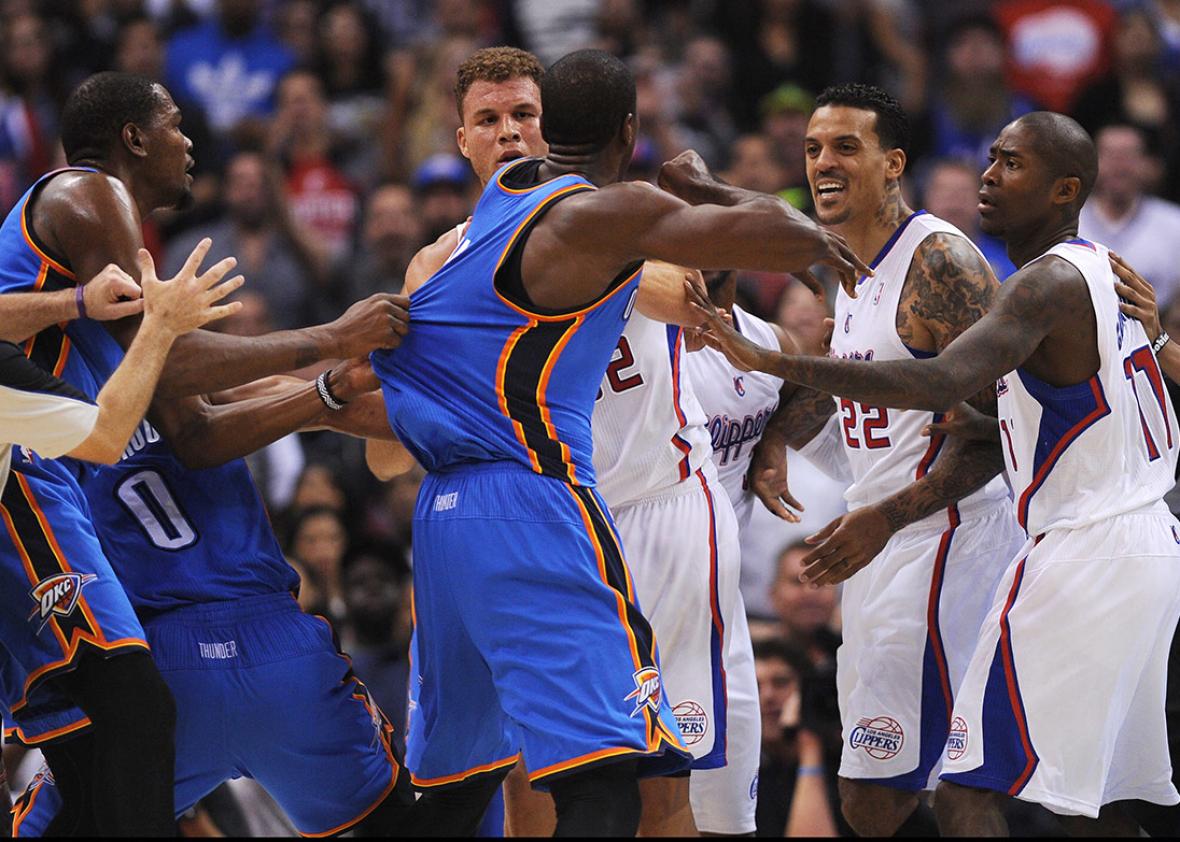
Robyn Beck/AFP/Getty Images
The sales smile. Shaquille O’Neal has an iconic smile. So does Michael Jordan. But those famous grinning mugs were deployed more off the court than on, often in the service of advertising a product. (One of Shaq’s gifts as a human is conveying seemingly genuine excitement when discussing products like Icy Hot and Gold Bond.)
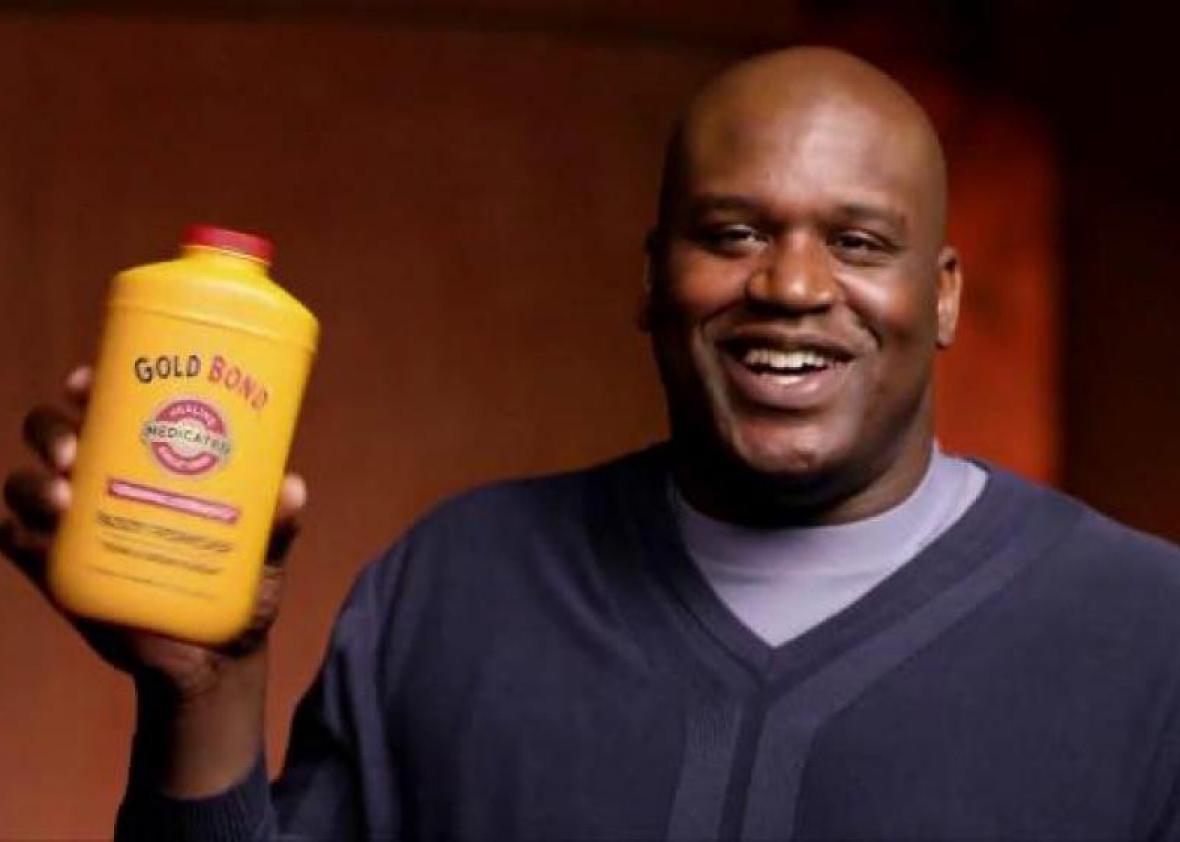
YouTube
Between the lines, O’Neal was fearsome and Jordan was an assassin. Except for the notable instance that he let his guard down and engaged in …
The disbelieving-success smile. The closest in type to the Newton-esque celebratory smile, this happens when one ridiculous play—or a whole string of them—goes in an athlete’s favor. It’s almost an apology, an acknowledgement to the opponent that you have benefitted from good fortune. In his 2013 Slate piece, McKenna noted that Danny Green smiled throughout the 2013 NBA Finals. A lesser-known San Antonio Spurs guard, Green couldn’t help but grin at the unlikeliness of his record-setting three-point–shooting performance against the Heat. The Finals were also the scene of the best-known disbelieving-success smile ever, which happened in 1992, when even the greatest player of all time was taken aback by how many three-pointers he’d made against the Trail Blazers.
Cam Newton isn’t known for disbelieving, crazed, or salesman-ish smiles. He’s known for smiling on the field when he makes good plays, and when he has time on the sidelines to muse on the wonder of life.
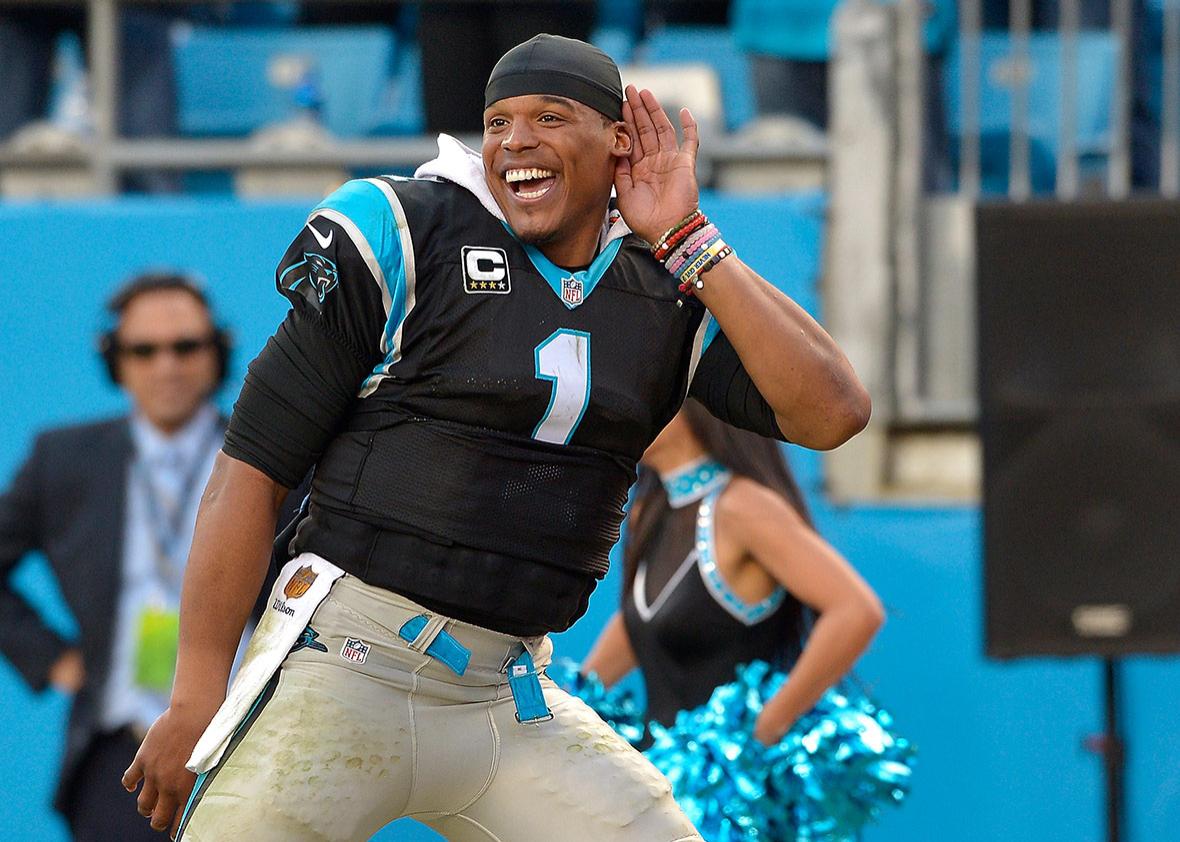
Grant Halverson/Getty Images
There are logical reasons why an athlete would avoid this kind of smile. As anyone who has been in seventh grade knows, it’s hard to be tough, cool, and enthusiastic at the same time, and for athletes it is important to be cool and tough. While scowls and fist pumps play as instinctive reflexes within the flow of intense competition, smiling can look like an act of self-removal—an indication that your head’s not in the game.
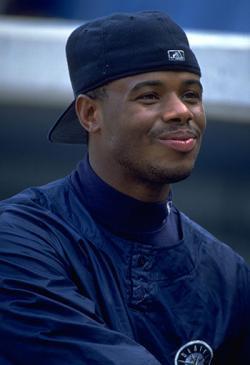
Jonathan Daniel/AllSport
Newton’s smile—like the backward hat of another famously relaxed star, Ken Griffey Jr.—has been seen as disrespectful indifference. And the worst message a star athlete can send is that his sense of self-worth is distinct from the outcome of whatever game he’s playing in—that he’ll be happy no matter how it turns out. Smiling is not gritty. You don’t smile when you’re rising and grinding. A grinning quarterback suggests that sports are something other than a 100-hour-a-week journey toward a perpetually unattainable perfection whose only reward is occasional grim satisfaction. (You might call this philosophy Sabanism.) That’s a proposition that lots of coaches, fellow players, writers, and fans will never be able to get behind.
I’m not here to defend indifference and disrespect, or to say that gritting and grinding don’t have their place. (I haven’t smiled once while writing this piece—gotta respect the process.) I’ve watched players who are legitimately indifferent and disrespectful—again, I have seen many Knicks games—and they are pains in the ass. But ultimately Griffey Jr. became a beloved figure because his achievements belied the happiness–hard-work dichotomy. You don’t hit 630 major-league home runs without respecting the competition and taking your career seriously. Griffey Jr. was in fact just elected last month to the Hall of Fame, and the president of that august institution said he’s open to the idea of Griffey’s bronze plaque depicting him in a backward hat.
Newton could be on his way to that level of unassailability. A Super Bowl win would cap what will almost certainly be an MVP season, and one of the best ever for an NFL quarterback. Would that be enough to loosen the scowl’s current monopoly on celebratory athletic expression?
Maybe, but it seems more likely to reinforce the idea that only all-time greats get to let their guard down. Overt happiness on the baseball field, Griffey’s career aside, is still mostly limited to the jubilant release of tension that happens after the last out of no-hitters. If a pro athlete wants to smile, then, he either needs to be an all-time great or accomplish something rare and epic.
Making it to the Super Bowl is an amazing achievement. It will be the biggest game of Cam Newton’s life, and you could say the same for most of his teammates. It’s a high-stakes event for the best athletes in the world, the culmination of everything they’ve worked for in their careers. They should be smiling all game long.
